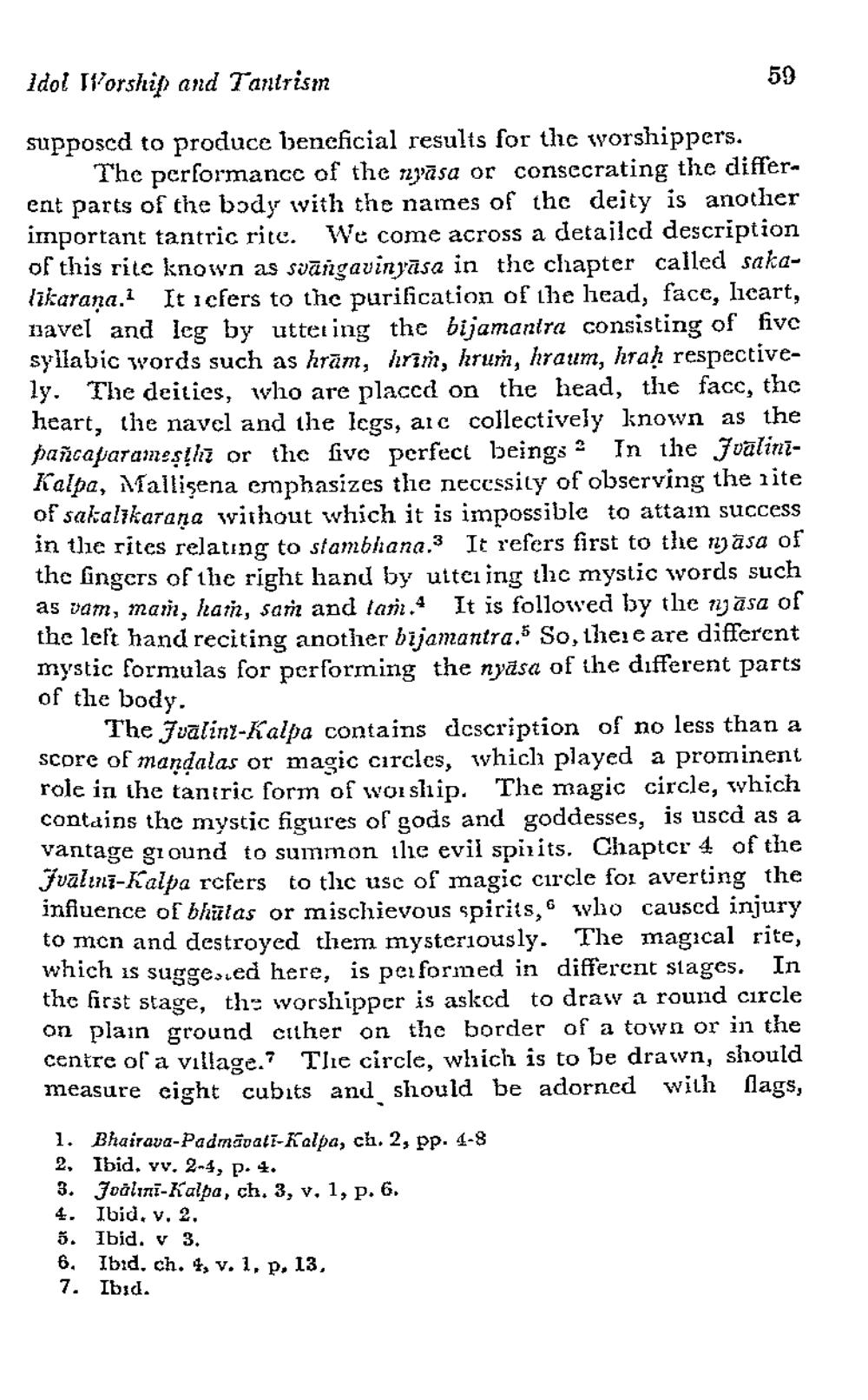________________
Idol Worship and Tantrism
59
supposcd to produce beneficial results for the worshippers.
The performance of the rzāsa or consecrating the different parts of the body with the names of the deity is another important tantric rite. We come across a detailed description of this rite known as svāngavinyāsa in the chapter called sakalīkarana. It icfers to the purification of the lead, face, licart, navel and leg by uttering the bijamantra consisting of five syllabic words such as hram, hirin, hrun, hraum, hraḥ respectively. The deities, who are placed on the head, the face, the heart, tie navel and the legs, aic collectively known as the pañcayaranestli or the five perfect beings - In the JvaliniKalpa, Mallisena emphasizes the necessity of observing the rite of sakalikarana without which it is impossible to attain success in tlie rites relating to stambhana.3 It refers first to the nasa of the fingers of the right hand by uitei ing the mystic words such as vam, mam, ham, san and tan. It is followed by the nāsa of the left hand reciting another bijamantra.5 So, there are different mystic formulas for performing the nyasa of the different parts of the body.
The Jualinz-Kalpa contains dcscription of no less than a score of mandalas or magic circles, which played a prominent role in the tantric form of worship. The magic circle, which contains the mystic figures of gods and goddesses, is uscd as a vantage ground to summon ile evil spirits. Chapter 4 of the Fvalınız-Kalpa rcfers to tlic use of magic circle foi averting the influence of bhülas or mischievous spirits, who caused injury to mon and destroyed them mysteriously. The magical rite, which is sugges.ed here, is performed in different stages. In the first stage, the worshipper is asked to draw a round circle on plain ground cither on the border of a town or in the centre of a village.? Tlie circle, which is to be drawn, should measure cight cubits and should be adorned with flags,
1. Bhairava-Padmãvali-Kalpa, ch. 2, pp. 4-8 2, Ibid. vy. 2-4, p. 4. 3. Joälıni-Kalpa, ch. 3, v, 1, p. 6. 4. Ibid. v. 2. 5. Ibid. v 3. 6. Ibid. ch. 4, v. 1, p. 13, 7. Ibid.




